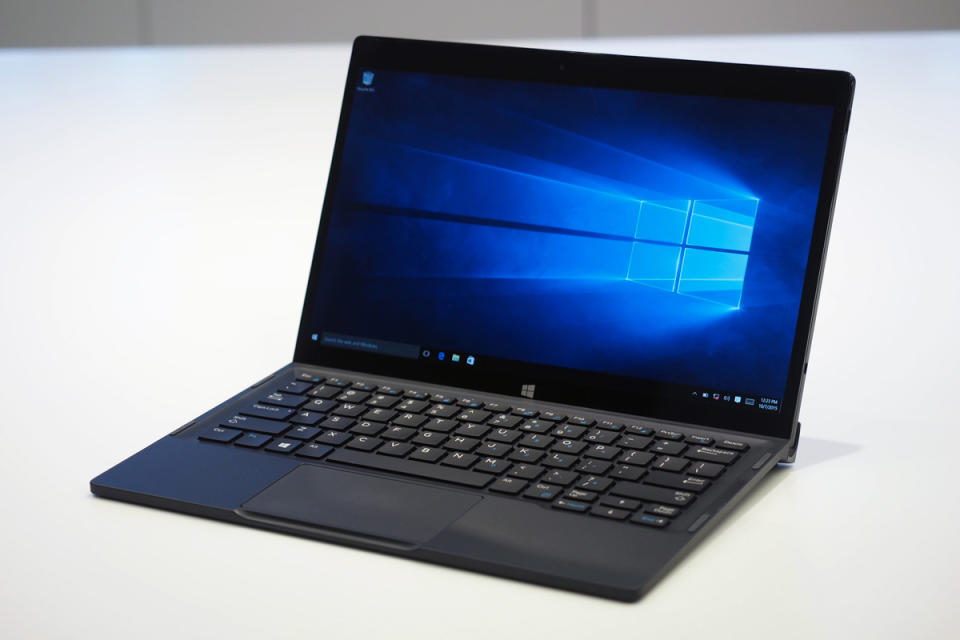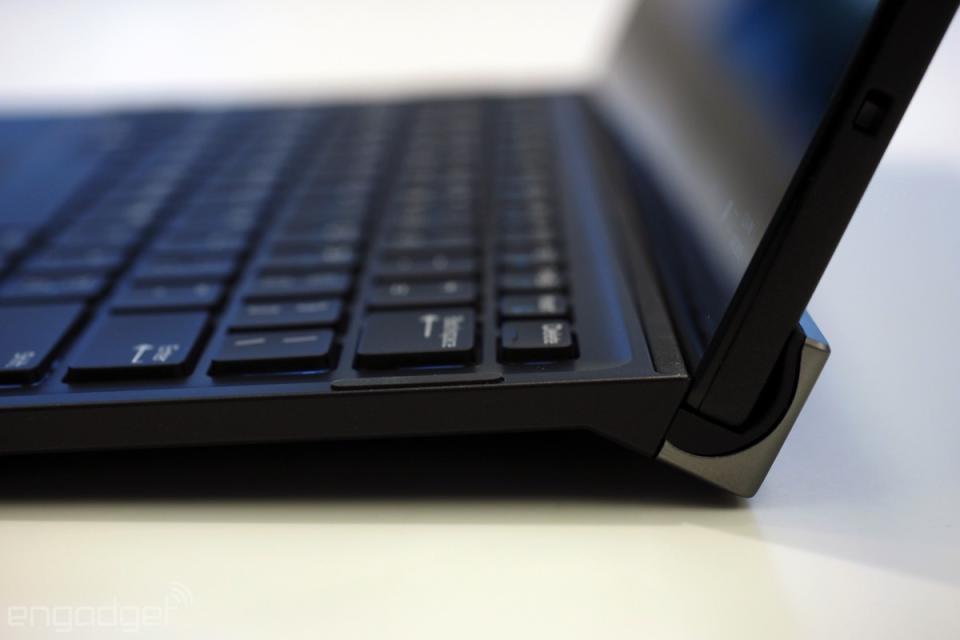Dell's latest XPS 12 looks like a Surface rival, feels like a step backward

We first reviewed the Dell XPS 12 back in 2012, when Windows 8 had just come out and touchscreens on PCs weren't yet standard. It had a weird design, but it worked: a screen that flipped around inside its frame, allowing you to convert the 12-inch laptop into a 12-inch tablet. No, it wasn't as versatile as the now-ubiquitous Yoga, but it was a well-built, fast machine that could serve multiple purposes, and whose comfortable keyboard made it a dream to use in regular notebook mode. Now Dell has re-released the XPS 12 with a new design -- a 2-in-1 detachable that takes after the Surface Pro. Unfortunately, though, it's a poor imitation, and ultimately feels like a step backward.
But first, the good news. For a starting price of $999, the XPS 12 comes with a keyboard dock in the box. And it's an excellent keyboard too -- I know because I tried it. The backlit buttons here are well-spaced and springy, with a pleasant soft-touch finish that feels great beneath the fingertips. Also, the display is a delight: 1080p resolution to start, with an optional 4K panel that Dell says meets 100 percent of the color gamut, depending on your screen brightness and what you're looking at. Also, the tablet is easy to remove from its dock with one hand, although the magnetic connection otherwise seems strong.
That said, I see a few potential problems. One is that because the tablet uses a hingeless keyboard dock instead of a kickstand, the screen angle is not adjustable the way it is on the Surface and other 2-in-1s. What's more, because of that fixed angle, it isn't possible to insert the screen facing away from the keyboard, the way you can on other convertibles, and like you could on the old XPS 12. We might be more forgiving if the 12 was primarily meant to be used as a tablet, but a Dell spokesperson actually described it to me as a "laptop first." To not have an adjustable screen immediately puts it at a disadvantage against proper notebooks, especially when it comes to using it in one's lap.
Problem number two: In the interest of making the device as lightweight as possible (2.8 pounds, or 1.75 pounds for the tablet only), Dell went with one of Intel's lower-powered Core M processors this time instead of something from Intel's Core i3/i5/i7 family. As we've seen already in our own testing, Core M takes a performance hit, but doesn't offer significantly better battery life in exchange. To be fair, HP also this week announced a skinny Surface-like 2-in-1 with a Core M chip, and the base-model Surface Pro 4 will have an even slower Core M chip plus half the RAM. So it's not like Dell is the only one compromising on performance. But because the XPS 12 used to have more robust Core chips -- and fast performance to go with it -- this feels like a move in the wrong direction.

Problem number three: The XPS 12's pressure-sensitive pen doesn't actually come in the box, the way it does on the Surface and other rival devices. But that's not nearly as outrageous as the Surface being sold without a keyboard.
The XPS 12 ships in November starting at $999, keyboard included. For that price, you get a Core m5 CPU, 8GB of RAM, 128GB of storage and a 1080p screen. There will also be a $1,299 configuration that steps up to a 256GB SSD and that 4K screen I mentioned. Either way, the processor and memory allotment is the same.
















